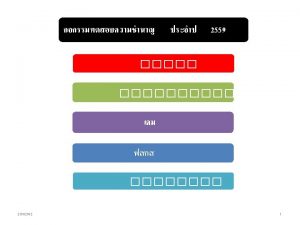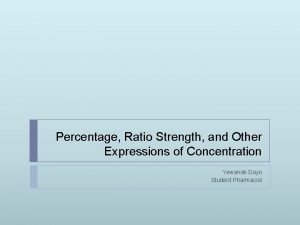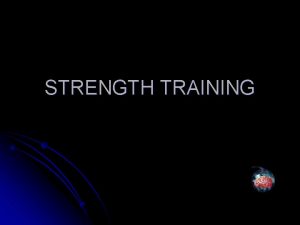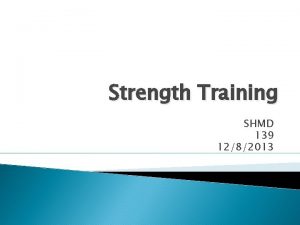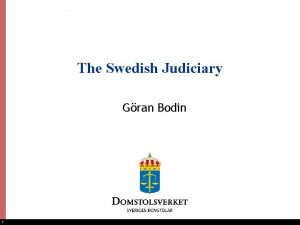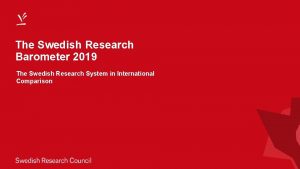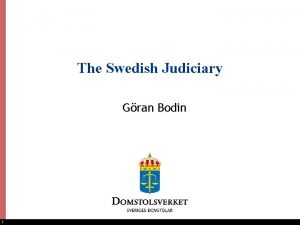SWEDISH COLLEGE OF ENGINEERING TECHNOLOGY Strength of MaterialsI





















- Slides: 21

SWEDISH COLLEGE OF ENGINEERING & TECHNOLOGY Strength of Materials-I CE-207 (2+1) Engr. Muhammad Abbas Qurshi

Course Content • Stress & Strain • Statically determinate & Indeterminate Compatibility problems , compound bars • Shear force & Bending Moment Diagrams • Application of Stress & Strain • Bending in Beam • Stresses in Beam • Deflection in Beam • Principal of superposition • Relation between load, shear force, bending moment Engr. Muhammad Abbas Qurshi

Course Content • Distribution of shear stresses in beam of symmetrical section • Theory of bending • Deflection of beam using double integration, Moment area and conjugate beam method • Combined bending & direct stress • Torsion of circular section Recommended Book Strength of Materials • Andrew Pytel • Ferdinand L. Singer Engr. Muhammad Abbas Qurshi

Instruction • • • Bring Text book in every class Bring Calculator with you 5 min max. tolerance in timing 75% Attendance is mandatory no exception Submit Assignment in time to Class Representative. Engr. Muhammad Abbas Qurshi

ENGINEERING MECHANICS STATIC S DYNAMICS Engr. Muhammad Abbas Qurshi MECHANICS OF SOLIDS

• Static • Dynamic Study of External Effects on Rigid body • Strength of Materials Study of internal affects Engr. Muhammad Abbas Qurshi

DIFFERENT NAME OF SUBJECT Strength of Materials Mechanics of Materials Mechanic of Deformable bodies Mechanics of Solids Engr. Muhammad Abbas Qurshi

• All branches of Engineering deal with physical systems, the component parts of which are to be assigned definite physical sizes, fabricated from some materials. Engr. Muhammad Abbas Qurshi

• Appropriate sizing is necessary for these part to safely withstand the imposed forces on them and at optimal cost. (Design) Engr. Muhammad Abbas Qurshi

• It is essential to study the behavior of the material from strength and deformation point of view as well as characteristics of different kind of forces, which cause different type of stresses in the material. Engr. Muhammad Abbas Qurshi

Definition • The subject that deals with the analytical determination of strength , deformation characteristics(Stiffness) and stability of different members is designated as “Strength of Materials” • Strength • Stiffness • Stability Engr. Muhammad Abbas Qurshi

Units SI units • The basic units in this system are: – Metre(m) for length – Kilogram(Kg) for mass; and – Second (s) for time Engr. Muhammad Abbas Qurshi

Derived Units • • • Area (m 2) Velocity (m/s) Acceleration (m/s 2) Force (kg. m/s 2 Newton. N) Stress (Force/Unit Area) P/A = N/m 2 Kpa=103 Pa 1 N/mm 2 Pa (Pascal) Mpa =106 pa 106 N/m 2 (106 Pa) Engr. Muhammad Abbas Qurshi

Forces Body Force The body force act throughout the body and associated with the units of volume of body. (Distributed over the volume of system but when we analyze we say it acts through the center of gravity) – Gravitational force – Inertial force – Magnetic force Engr. Muhammad Abbas Qurshi

Surface Force • The surface force act on the surface or area elements of the body. (Could be concentrated force or distributed force) – Surface traction (act on boundary) Engr. Muhammad Abbas Qurshi

Internal Force • To know internal force we must know the concept of freebody diagram Free body diagram can be of section or complete member – Idealized line diagram – Applied forces – Reaction at section Engr. Muhammad Abbas Qurshi

Stress is the expression of force applied to a unit area of surface. It is measured in psi (English unit) or in MPa (SI unit). stress = force / area Engr. Muhammad Abbas Qurshi

Simple Stresses • There are three types of simple stress namely; normal stress, shearing stress, and bearing stress. Engr. Muhammad Abbas Qurshi

Normal Stress • The resisting area is perpendicular to the applied force, thus normal. There are two types of normal stresses; – tensile stress and – compressive stress. Tensile stress applied to bar tends the bar to elongate while compressive stress tend to shorten the bar. б =P/A where P is the applied normal load A is the area Engr. Muhammad Abbas Qurshi

Dividing the load by area does not give the stress at all points in the cross-sectional area; it merely determines the average stress. A more precise definition of Stress is obtained by dividing the differential load by the differential area over which it acts: б= d. P/d. A Engr. Muhammad Abbas Qurshi

QUESTIONS 1. What are the units of ‘Force' and ‘Stress’ in both systems? . 2. What is the definition of ‘Normal Stress’? . 3. What is meant by ‘free-body diagram’? . 4. What are different name of subject? . 5. Why we study this subject? . Engr. Muhammad Abbas Qurshi
 Swedish college of engineering and technology
Swedish college of engineering and technology Thakur college of engineering and technology
Thakur college of engineering and technology College of engineering science and technology
College of engineering science and technology Parasitic food chain example
Parasitic food chain example Steel bar
Steel bar Percentage by strength formula
Percentage by strength formula Half strength darrow's uses
Half strength darrow's uses How to calculate ratio strength
How to calculate ratio strength Dr ashley fuller swedish
Dr ashley fuller swedish Swedish life sciences
Swedish life sciences Swedish csn
Swedish csn Swedish american heart hospital
Swedish american heart hospital Swedish solar system
Swedish solar system Swedish audiology
Swedish audiology Premipension
Premipension Www.mil.se
Www.mil.se Pernilla sahlstrand johnson
Pernilla sahlstrand johnson Swedish society for nature conservation
Swedish society for nature conservation Turing program
Turing program Ivl swedish environmental institute
Ivl swedish environmental institute Random swedish words
Random swedish words Swedish verbs conjugation
Swedish verbs conjugation




